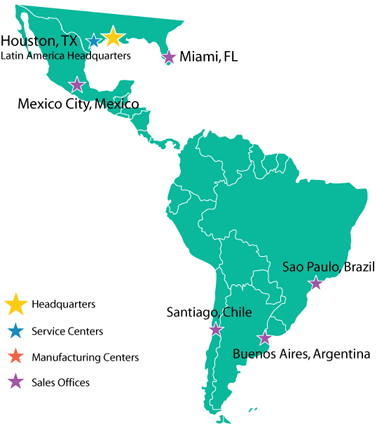 By Reza Shafa
By Reza Shafa
Mahmoud Ahmadinejad’s interest in South American counties is neither out of his concern for the well being of that region’s mostly poor people nor are the mullahs running charity houses.
A classified report recently leaked out of the regime’s Supreme National Security Council (SNSC) shows that the Islamic Revolutionary Guard Corps (IRGC) has a new plan to establish itself in Venezuela, Nicaragua, Columbia, Mexico, Uruguay, and Bolivia among others. The job for the IRGC, however a master of covert operations, is not as easy as it has been in the Middle East.
To begin with, the force is concentrating on two capitals: Managua and Caracas. Both countries have been recently visited by Ahmadinejad and presidents of both nations have paid back his gesture by visiting Tehran. The decision by the regime’s Ministry of Foreign Affairs to send more personnel to embassies in both capitals could not have been possible without the IRGC’s blessings. After all, it is Khatamolanbia Garrison of the IRGC which has to do the assumed construction in those countries. At the same time, Ministry of Intelligence and Security (MOIS) has its own plans and parallel to the IRGC, it has dispatched its agents as diplomats to Nicaragua and Venezuela.
It is interesting to know that Iranian embassies in Managua and Caracas each were opened with 30 employees. Now they have considerably increased the number of their personnel. The regime has stepped up its so called cultural programs through its embassies in the region. The IRGC skilled men have already begun teaching war tactics to the Venezuelan students in Tachira, Miranda, Bolivar city, and a few other schools throughout the country.
To help combat its increasing isolation, the mullahs have advised the IRGC to instruct the Khatamolanbia Garrison to engage in joint ventures with Venezuela’s petrochemical projects. One such activity would be a Methanol processing plant with an anticipated budget of $700 million. Such plants would produce 61 million tones of refined Methanol a year.
Aside from gas project, $1 billion has been allocated for investment in oil, agricultural machinery, and building 7,000 homes among many other promises made by Ahmadinejad in his latest trip to Venezuela. To enlist Managua’s support for its policies, it has given out 80 tractors called Veniran, a joint product of Iran and Venezuela to that country.
Investment in aluminum, steel, and wood industries are among many other contracts signed by Iran and Venezuela. Lastly, Tehran is desperately hopping to open a branch of Saderat Bank in Caracas to make up for the effects of sanctions on its banking industry.
Why would the mullahs go such far away distance to South America? The strategy is two folds; one to rally some support for its otherwise unpopular policies in nuclear proliferation and second to open a breathing space for its terrorist endeavors as close to U.S. coasts as possible.
Reza Shafa is an expert on the Iranian regime’s intelligence networks, both in Iran and abroad. He has done extensive research on VAVAK (MOIS), IRGC’s Intelligence Office, and Quds Force among others. Currently he is a contributor to NCRI website.


